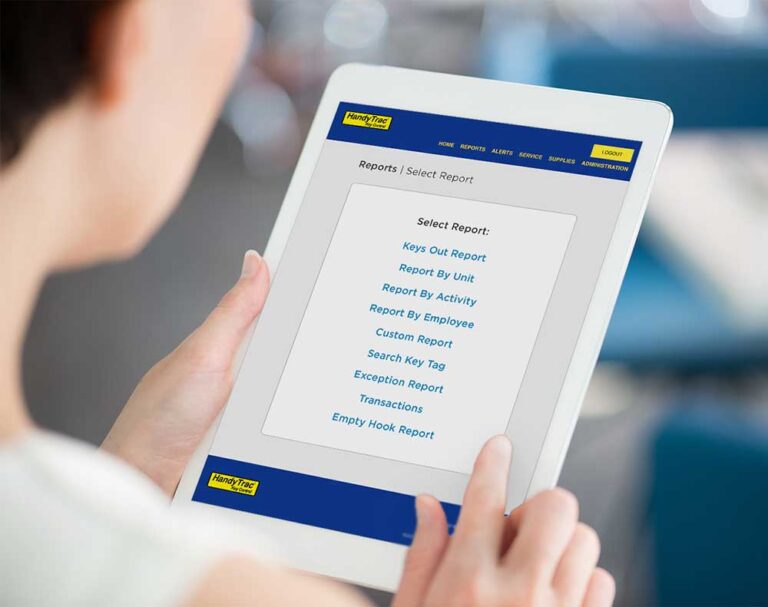 A strong key management policy is — pardon the obvious pun — the key to improved security for your building, campus, apartment community or business complex. Before you can implement a system that truly keeps your facility and your residents safe, you need a policy in place that effectively addresses vulnerabilities and requires accountability.
A strong key management policy is — pardon the obvious pun — the key to improved security for your building, campus, apartment community or business complex. Before you can implement a system that truly keeps your facility and your residents safe, you need a policy in place that effectively addresses vulnerabilities and requires accountability.
But what constitutes a good key management policy? How do you design and implement a system that makes sure your keys are accounted for at all times — and even more importantly, keeps those keys out of the wrong hands? Let’s explore the basic building blocks that every property should have when developing their key control systems.
An Accurate Inventory
There is no way around it: key management begins and ends with inventory. You have to know exactly how many doors and locks you have, and how many keys to those locks you have in circulation. Not knowing these numbers creates an instant vulnerability because all it takes for a break-in to occur is one stray key that someone forgot about, or that no one knew existed. In many cases where there hasn’t been efficient key management, the best way to hit the “reset” button is to re-key all the locks and log your inventory of new keys. That’s not always necessary, but if you honestly can’t provide an accurate accounting of all the keys circulating through your facility, it’s the only effective way to ensure your new key control system is vulnerability free.
An Accountability Protocol
Once you have (or regain) control of your keys through an accurate inventory, the next building block is to establish a secure method by which your employees check out and check in keys — one that makes every employee accountable for which keys they’re checking out, to which units, and for what reason. You should also know when the employee returns the key — and you can even set a time limit for added accountability. For added security, you can structure your system so that only certain employees are allowed to use certain keys. A computerized system makes these tasks much easier, but even paper accounting is better than no accounting system at all.
Secure, Centralized Storage for Keys
Any keys that aren’t in use should themselves be under lock and key, preferably in one central location for employees to access as needed. A tamper-proof box with multi-step secured access can be ideal to serve this purpose. Storing all keys in one location makes them much easier to control and monitor, and you can rest easy knowing these keys can’t be accessed without proper authorization.
Accurate Reporting
Every key should have its own “paper trail” — that is, you should always be able to track when the key was checked out, when it was checked in, who took the key and why they needed it. Quite often in the course of business, you’ll be able to identify “patterns of circulation” with these keys, so you can quickly detect when someone breaks the usual pattern — for example, checking out a key they don’t normally use, or taking too much time with a key. You’ll also know immediately when a key turns up missing (as well as who had the key last) and when a lock might need to be changed. These reports can be painstaking and tedious, but they can often be simplified when handled by computer because you can filter results according to what you’re looking for. Regardless, reporting is critical to maintaining a secure environment.
Implementing a Key Management System that Honors Your Policies
Once you have established the values that make up a solid key management policy, you can begin to design and implement a system that upholds these values. For many communities, one of the best ways to protect and track keys is by installing a secure key control system like the ones HandyTrac offers. A well-designed system will provide security features that require employees to go through multiple steps to check out and check in keys — for example scanning a badge or their thumbprint, followed by entering a PIN. The system might also use barcode tags to track keys, and even randomize their location in the box so employees can’t memorize their locations. Computerized access also enables real time tracking, reporting and alerts which may be emailed or accessed via Wi-Fi. This way, anomalies and irregular behaviors can be identified and tracked immediately.
To some, having a strict key management policy with security layers such as these might seem a bit over-the-top, or that somehow they convey a sense of distrust among employees. But here’s the paradox: When you have a strong key management policy, and a secure electronic key control system to match it, the chance of an attempted breach goes way down. The strong security becomes a preventative in itself. HandyTrac offers a selection of high-quality, secure key control systems that are certain to meet or exceed your key control policies. To learn more about our solutions, contact us today.




